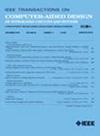Reverse-Engineering Optimization Techniques of High-Level Synthesis: Practical Insights Into Accelerating Applications With AMD-Xilinx Vitis
IF 2.7
3区 计算机科学
Q2 COMPUTER SCIENCE, HARDWARE & ARCHITECTURE
IEEE Transactions on Computer-Aided Design of Integrated Circuits and Systems
Pub Date : 2025-01-07
DOI:10.1109/TCAD.2025.3526053
引用次数: 0
Abstract
Modern AI applications contain computationally expensive sections. Accelerator cards and tools like AMD Vitis HLS leverage high-level synthesis (HLS) and hardware (HW) optimizations to create custom HW designs to accelerate them. Nevertheless, the learning curve is steep, even for those with previous knowledge of HW design, due to the complexity of the optimization techniques and limited information on their interactions and HW effects. This article quantitatively analyses the interactions of optimization techniques after reverse engineering Vitis’ optimization directives, both in isolation and in pairs. Over 150 experiments were conducted to investigate three distinct goals: 1) assessing pragma behavior and the rules governing pragma application and optimizations; 2) modeling Vitis HLS latency estimates; and 3) evaluating the impact of optimizations on design space exploration (DSE), specifically area and latency. These experiments involve different combinations and placements of optimizations in the loop and function hierarchy of the test bench. Our findings offer guidance on using Vitis pragmas and identify promising configurations for optimizing latency and area.高级合成的逆向工程优化技术:加速AMD-Xilinx Vitis应用的实际见解
现代人工智能应用程序包含计算成本高昂的部分。加速卡和像AMD Vitis HLS这样的工具利用高级合成(HLS)和硬件(HW)优化来创建定制的硬件设计来加速它们。然而,学习曲线是陡峭的,即使对于那些以前有硬件设计知识的人,由于优化技术的复杂性和有限的信息,他们的相互作用和硬件的影响。本文定量分析了逆向工程Vitis优化指令后优化技术之间的相互作用,包括孤立的和成对的。150多个实验研究了三个不同的目标:1)评估语用行为和控制语用应用和优化的规则;2)建立Vitis HLS延迟估计模型;3)评估优化对设计空间探索(DSE)的影响,特别是面积和延迟。这些实验涉及在测试台架的循环和功能层次结构中优化的不同组合和位置。我们的发现为使用Vitis实用程序提供了指导,并确定了优化延迟和面积的有前途的配置。
本文章由计算机程序翻译,如有差异,请以英文原文为准。
求助全文
约1分钟内获得全文
求助全文
来源期刊
CiteScore
5.60
自引率
13.80%
发文量
500
审稿时长
7 months
期刊介绍:
The purpose of this Transactions is to publish papers of interest to individuals in the area of computer-aided design of integrated circuits and systems composed of analog, digital, mixed-signal, optical, or microwave components. The aids include methods, models, algorithms, and man-machine interfaces for system-level, physical and logical design including: planning, synthesis, partitioning, modeling, simulation, layout, verification, testing, hardware-software co-design and documentation of integrated circuit and system designs of all complexities. Design tools and techniques for evaluating and designing integrated circuits and systems for metrics such as performance, power, reliability, testability, and security are a focus.

 求助内容:
求助内容: 应助结果提醒方式:
应助结果提醒方式:


